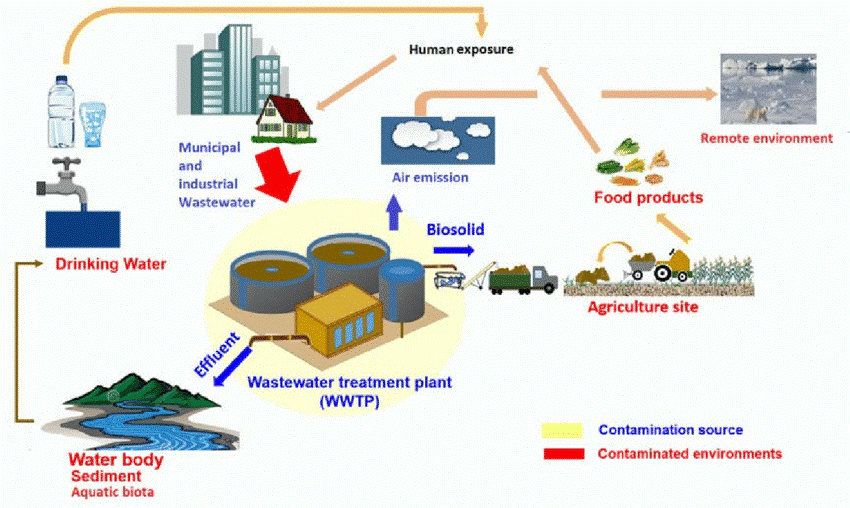How PFAS Treatment Ensures Clean and Lasting Water
The existence of PFAS, generally recognized as "for life chemicals," postures substantial challenges to water quality and public health. The implications of these treatments prolong beyond immediate wellness advantages; they raise critical questions about long-term water management techniques that need to be resolved to ensure a resilient future.

Recognizing PFAS Contamination
PFAS, or per- and polyfluoroalkyl substances, have become a considerable ecological problem due to their widespread occurrence and determination in the setting. These artificial chemicals have actually been utilized in various industrial applications and consumer products, including non-stick pots and pans, water resistant clothes, and food packaging, because of their special homes such as water and oil resistance.
The contamination of dirt and water resources by PFAS happens mostly with industrial discharges, firefighting foam usage, and leaching from landfills. pfas management. Once launched, these materials are immune to destruction, leading to their accumulation in the environment. This persistence elevates essential concerns, as PFAS can take a trip fars away through groundwater and surface water supply, impacting drinking water supplies and ecological communities

Health Risks of PFAS
The persistence of PFAS in the setting raises substantial health and wellness issues for people subjected to these substances. Study has connected PFAS direct exposure to various negative health results, including immune system dysfunction, liver damage, and raised risk of particular cancers.
The universality of PFAS in consumer products, such as non-stick cookware, water-repellent textiles, and food packaging, additional amplifies the danger of direct exposure. Drinking water infected with PFAS is a considerable problem, as these chemicals can leach right into groundwater resources. Susceptible populaces, consisting of kids and those living near commercial sites, may deal with heightened dangers as a result of their developing systems and prospective for greater direct exposure levels.
As understanding of these wellness risks continues to grow, governing firms are beginning to establish guidelines for PFAS degrees in alcohol consumption water. Public health initiatives are important to reduce direct exposure and shield communities from the lasting effects of these unsafe substances.

Innovative Treatment Technologies
How can we properly deal with the obstacles positioned by PFAS contamination in water resources? Innovative therapy technologies are arising as crucial options in the quest for clean water. These techniques concentrate on the removal or devastation of per- and polyfluoroalkyl substances (PFAS), which are well-known for their determination in the setting.
One promising technique is adsorption using advanced materials, such as turned on carbon and ion exchange resins. These materials have revealed efficacy in capturing PFAS molecules from water. An additional significant technology is membrane filtering, which makes use of nanofiltration and turn around osmosis to separate pollutants at the molecular degree, hence providing a barrier against PFAS.
Furthermore, progressed oxidation procedures (AOPs) use solid oxidants to break down PFAS compounds into harmless by-products. This approach is specifically effective for treating highly polluted water resources. Bioremediation strategies, utilizing specific bacteria, are likewise being checked out to break down PFAS.
As study proceeds, crossbreed systems that incorporate numerous modern technologies might supply boosted efficiency, addressing the complexities of PFAS contamination. The advancement and application of these ingenious treatment innovations are vital steps toward guaranteeing the security and sustainability of our water resources.
Benefits of Effective PFAS Therapy
Effectively dealing with PFAS contamination in water resources substantially improves public health and ecological safety. PFAS, often described as "permanently chemicals," are immune to deterioration and can accumulate in the body, go right here resulting in serious wellness risks such as cancer cells, liver damage, and immune system disorder. By carrying out effective therapy techniques, areas can minimize exposure to these dangerous compounds, inevitably enhancing the health results of their populations.
Additionally, successful PFAS therapy contributes to the conservation of local ecological communities. Polluted water can detrimentally impact marine life and disrupt the fragile balance of regional environments. By guaranteeing tidy water, treatment processes shield biodiversity and keep environmental integrity.
Furthermore, reliable PFAS remediation sites can promote public self-confidence in water quality. When neighborhoods are assured that their drinking water is without unsafe contaminants, it promotes a feeling of safety and wellness. This depend on is essential for neighborhood involvement and assistance for ongoing water administration campaigns.
Future of Water Sustainability
In the middle of growing worries regarding water top quality and deficiency, the future of water sustainability hinges on ingenious techniques and joint initiatives. As areas face the looming dangers of impurities like PFAS, the growth of innovative therapy modern technologies is essential. These technologies not only focus on the removal of harmful substances but also advertise the reuse and recycling of water, therefore reducing overall need.
In addition, reliable water administration plays a crucial duty in making certain lasting methods. Policymakers need to integrate scientific study with governing structures to establish clear standards for water usage and treatment. Stakeholder involvement, consisting of regional neighborhoods and industries, fosters a feeling of shared obligation and encourages lasting methods across different sectors.
Financial investment in infrastructure is additionally essential; updating aging systems to incorporate modern purification and filtration techniques can substantially improve water quality. Accepting green innovations, such as natural purification systems, can offer eco-friendly remedies.
Inevitably, the future of water sustainability hinges on a holistic strategy that integrates technology, plan, and community participation. By prioritizing these components, we can protect our water sources for generations to find, making certain clean and lasting water for all.
Conclusion
In verdict, the effective therapy of PFAS is essential for making sure clean and lasting water. By employing sophisticated technologies such as turned on carbon adsorption, membrane filtering, and advanced oxidation processes, areas can significantly decrease the wellness risks connected with these contaminants. The integration of these treatment techniques see here now sustains ecological community defense and enhances biodiversity. Ultimately, robust PFAS treatment techniques add to long-lasting durability in water administration, cultivating public trust fund in water top quality and advertising lasting techniques.